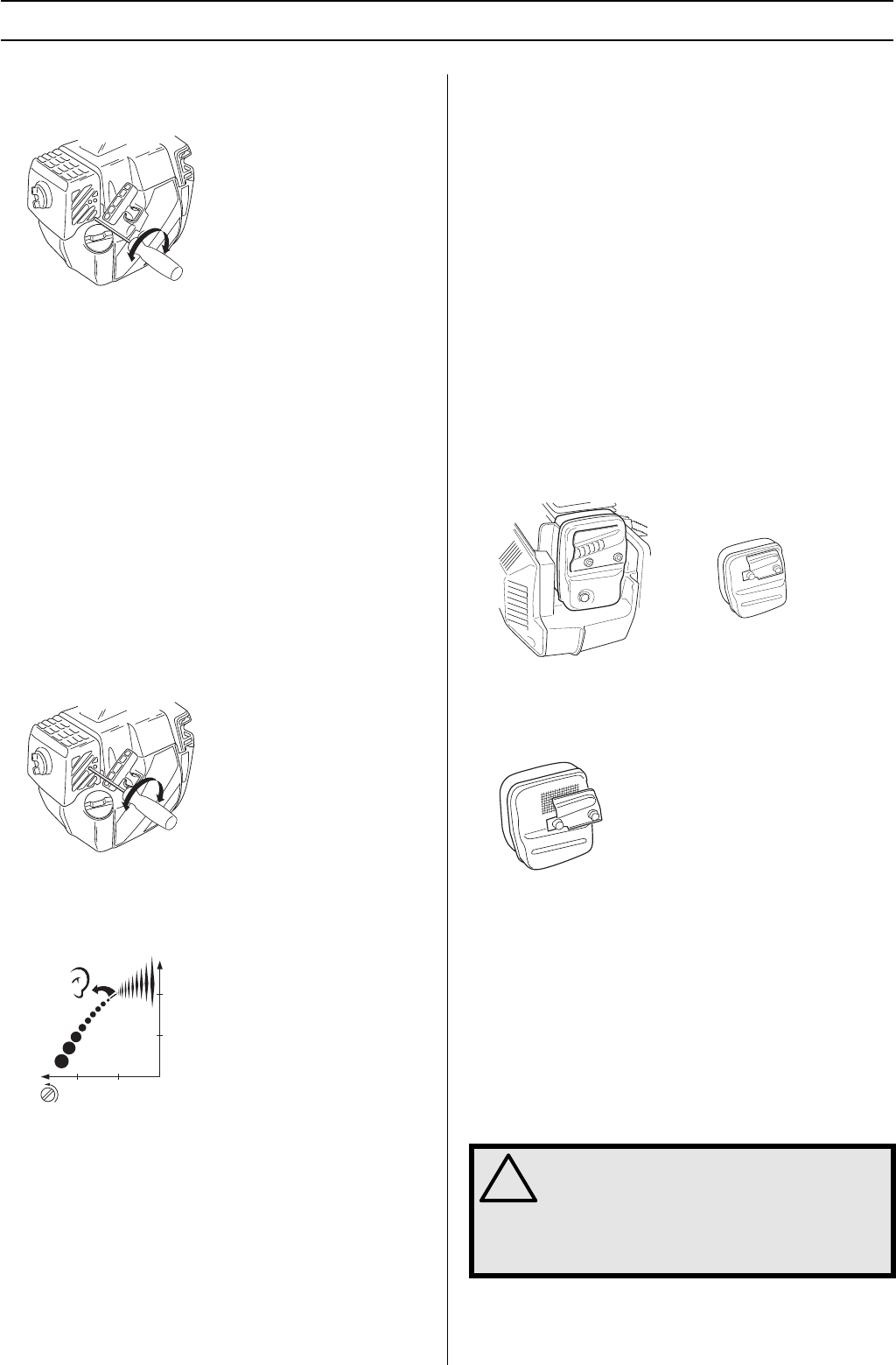
English – 21
MAINTENANCE
will run smoothly in every position. The idle speed should also
be well below the speed at which the cutting attachment starts
to rotate.
CAUTION! If the idle speed cannot be adjusted so that the
cutting attachment stops, contact your dealer/service
workshop. Do not use the machine until it has been correctly
adjusted or repaired.
High speed jet H
Note that the engine should not be under load when you
adjust the high speed jet H. You should therefore remove the
cutting attachment, nut, support flange and drive disc before
adjusting the high speed jet H. The high speed jet H affects
the engine power, speed, temperature and fuel consumption.
If the high speed jet H is set too lean (screwed in too far) the
engine speed will be too high and cause engine damage. Do
not let the engine run at full speed for more than 10 seconds.
Apply full throttle and turn the high speed jet H very slowly
clockwise until the engine slows down. Then turn the high
speed jet H very slowly anticlockwise until the engine starts to
run unevenly. Now turn the high speed jet H slowly clockwise
a little way until the engine runs smoothly.
The high speed jet H is adjusted correctly when the machine
burbles a little. If the machine races then the setting is too
lean. If the engine produces a lot of smoke and burbles a lot
then the setting is too rich.
CAUTION! For optimum adjustment of the carburettor,
contact a qualified dealer/service workshop that has a
revolution counter at their disposal.
Correctly adjusted carburettor
When the carburettor is correctly adjusted the machine will
accelerate without hesitation and burble a little at maximum
speed. It is also important that the cutting attachment does
not rotate at idle. If the low speed jet L is set too lean it may
cause starting difficulties and poor acceleration.
If the high speed jet H is set too lean it will result in less power,
less performance, poor acceleration and/or damage to the
engine. If both the L and H jets are set too rich it will results in
acceleration problems or too low a working speed.
Muffler
CAUTION! Some mufflers are fitted with a catalytic
converter. See chapter on Technical data to see whether your
machine is fitted with a catalytic converter.
The muffler is designed to reduce the noise level and to direct
the exhaust gases away from the operator. The exhaust
gases are hot and can contain sparks, which may cause fire
if directed against dry and combustible material.
Some mufflers are equipped with a special spark arrestor
mesh. If your machine has this type of muffler, you should
clean the mesh at least once a week. This is best done with a
wire brush.
On mufflers without a catalytic converter the mesh should be
cleaned weekly, or replaced if necessary. On mufflers fitted
with a catalytic converter the mesh should be checked, and if
necessary cleaned, monthly. If the mesh is damaged it
should be replaced.
If the mesh is frequently blocked, this can be a sign that the
performance of the catalytic converter is impaired. Contact
your dealer to inspect the muffler. A blocked mesh will cause
the machine to overheat and result in damage to the cylinder
and piston.
CAUTION! Never use a machine with a defective muffler.
H
!
WARNING! Mufflers fitted with catalytic
converters get very hot during use and
remain so for some time after stopping. This
also applies at idle speed. Contact can result
in burns to the skin. Remember the risk of
fire!


















